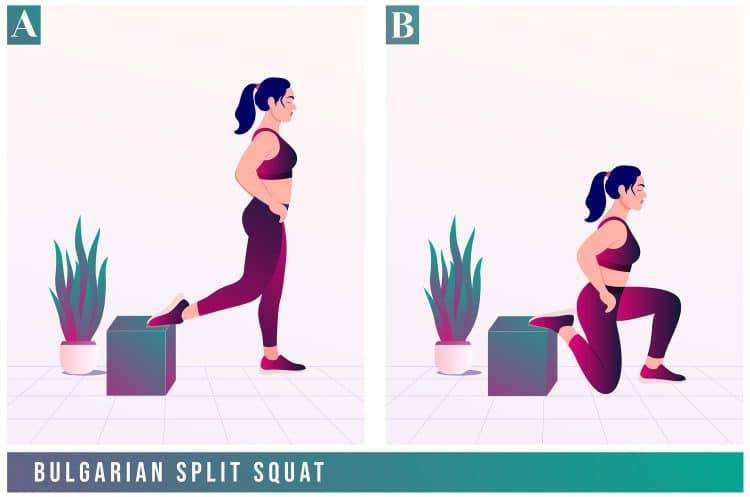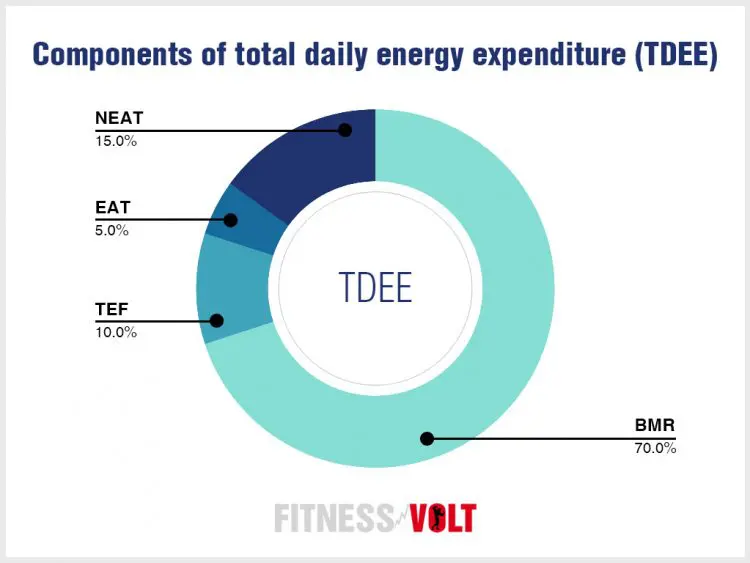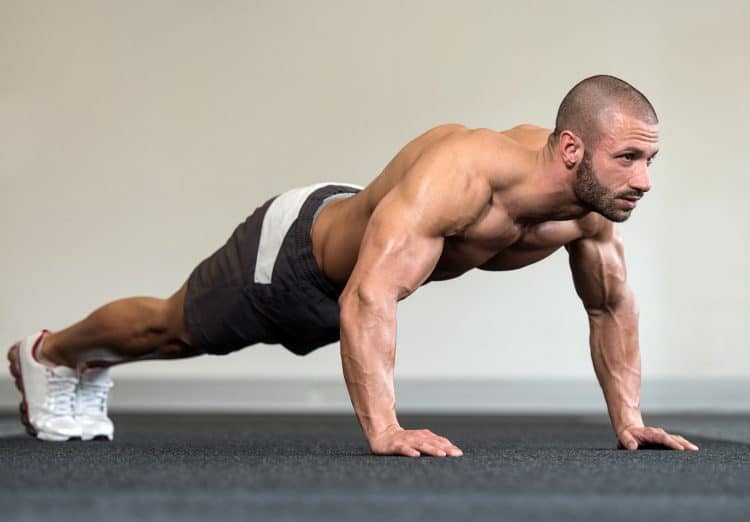Life has a frustrating way of getting in the way of your workouts. It’s like the universe doesn’t want you to be muscular and strong! Gyms close, work takes precedence, your friends and family demand more of your time; sometimes it’s impossible to fit in a good training session.
And while missing the occasional workout probably won’t harm your gains, missing more than a few will start to erode your progress. And given how darn hard it is to build muscle and strength, even a small loss can be very frustrating.
The good news is that you don’t have to spend an hour or more in the gym to maintain your gains. In fact, just a few minutes of bodyweight training is all you need to prevent muscle atrophy.
So, the next time you can’t make it to the gym, don’t just let your muscles wither and shrink, bust out this workout and use it to maintain your hard-won progress. It’s also the ideal workout for vacations and whenever you want to train but don’t have the energy for a full gym session.
Workout Overview
Believe it or not, you can train all your major muscles with just four compound calisthenic exercises. While this program might not be as balanced as a more comprehensive training plan, it covers enough bases to maintain muscle mass and strength. As an added benefit, you don’t need any exercise equipment to do it.
So, don’t worry that you aren’t doing lateral raises for your medial deltoids or calf raises for your gastrocnemius and soleus. Despite not hitting those muscles directly, they’re still getting a good workout, albeit indirectly.
Level Up Your Fitness: Join our 💪 strong community in Fitness Volt Newsletter. Get daily inspiration, expert-backed workouts, nutrition tips, the latest in strength sports, and the support you need to reach your goals. Subscribe for free!
Do this full-body, four-exercise, bodyweight-only workout any time you cannot get to the gym:
| # | Exercise | Reps | Sets | Rest |
| 1 | Iso-dynamic Tyson push-up | 30 seconds/max | 2-4 | 60-90 seconds |
| 2 | Pull-up pyramid | 1, 2, 3, 4, 5, etc. | 2-4 | 60-90 seconds |
| 3 | Iso-dynamic Bulgarian split squat | 30 seconds/max | 2-4 | 60-90 seconds |
| 4 | Single-leg table bridge pyramid | 1, 2, 3, 4, 5, etc. | 2-4 | 60-90 seconds |
Exercise Instructions
Because you’ve only got your body weight to work with, this training program uses a couple of unique methods designed to make each exercise much more challenging. These methods will take your muscles to failure faster for a more time-efficient workout.
Of course, before you start your workout, you should spend a few minutes warming up and preparing your muscles and joints for what you are about to do. Begin with 5-10 minutes of cardio, e.g., jump rope, followed by some dynamic mobility and flexibility exercises, such as the DeFranco Agile 8 routine.
1. Iso-dynamic Tyson push-up
Target muscles: Pectoralis major, deltoids, triceps, core.
Mike Tyson was an absolute beast in the ring. He was fast, powerful, and immensely strong. He did very little weight training and, instead, built his strength with bodyweight exercises. While Tyson didn’t invent this push-up variation, he was seen doing it so often that his name will always be associated with it.
How to do it:
- Adopt the push-up position with your feet against a wall, arms straight, and chest over your hands.
- Bend your elbows and hover with your chest an inch above the floor for 30 seconds. Do not hold your breath. This is the isometric (iso) part of the exercise.
- Next, extend your arms, bend your legs, and push your butt back toward your heels.
- Move forward and back down into the push-up position and repeat.
- Do as many reps as you can.
2. Pull-up pyramid
Target muscles: Latissimus dorsi, biceps, forearms.
Pull-ups are one of the best ways to build your back and biceps. Not convinced? Check out the back and bis of the average male gymnast. Those guys are STACKED! To do pull-ups at home, you’ll need something like a doorway pull-up bar or a power tower. Alternatively, you can use a tree branch in your yard, an exposed garage beam, or even the top of a door.
How to do it:
- Hang from your chosen pull-up bar with an overhand, shoulder-width grip. Pull your shoulders down and back, lift your sternum, and brace your core.
- Bend your elbows and pull your chin up and over the bar.
- Descend smoothly and then take a rest. Time your rest by taking one deep breath.
- Regrip the bar and do two reps.
- Rest for two deep breaths.
- Keep adding one rep and taking one extra breath until you can no longer continue.
- Rest for 90 seconds and start back at one rep/breath.
3. Iso-dynamic Bulgarian split squat
Target muscles: Quadriceps, hamstrings, gluteus maximus, abductors, adductors.
The legs are very strong, which is why most people do heavy barbell squats and leg presses to overload their quads, hamstrings, etc. With no external load available, you’ll have to use alternative methods to fatigue your legs. So, for these Bulgarian split squats, each set starts with a 30-second isometric hold. This will significantly reduce the number of reps you can do.

How to do it:
- Stand with your back to a chair, bed, or sofa. Bend one leg and place your foot on the support behind you. Hop forward into a short-split stance.
- Bend your leg and lower your rear knee down to within an inch of the floor.
- Hold this position for 30 seconds.
- Then, without resting, pump out as many reps as you can.
- Rest a moment, swap legs, and repeat on the other side.
4. Single-leg table bridge pyramid
Target muscles: Hamstrings, gluteus maximus.
Given that about 50 percent of your total muscle mass resides in your lower body, it makes sense to do two leg exercises. Where Bulgarian split squats are a knee/quad-centric exercise, single-leg table bridge hip raises hit your hamstrings and glutes more.
How to do it:
- Sit on the floor with your legs bent to around 90 degrees. Place your hands on the floor just behind your hips, fingers pointing slightly outward or straight ahead as preferred.
- Push your shoulders down and back, drive your palms into the floor, and extend your elbows to lift your butt a few inches off the ground. Look straight ahead.
- Lift one leg up, so your weight is supported on one foot only.
- Drive your foot into the floor and lift your hips up, so your body is parallel to the floor.
- Lower your hips, switch legs and then do one rep on the other side.
- Next, switch legs and do two reps on each side, then three, four, five, etc. Continue until you reach failure.
- Rest a moment and then repeat, starting back at one rep per leg.
Workout FAQs
1. Can I change the exercises?
Providing you use similar exercises, you are free to make changes to the program. However, make sure you use very similar exercises. For example, instead of Bulgarian split squats, you could do regular split squats instead or incline rows instead of pull-ups.
Level Up Your Fitness: Join our 💪 strong community in Fitness Volt Newsletter. Get daily inspiration, expert-backed workouts, nutrition tips, the latest in strength sports, and the support you need to reach your goals. Subscribe for free!
However, use the same intensifying training methods to make sure the workout is hard enough to produce results. Irrespective of which exercises you do, you should still be able to exhaust your muscles in 2-4 sets. If you feel you need more sets, you need to push yourself closer to failure.
2. Is this a bulking or cutting workout?
The main difference between cutting and bulking is your diet rather than the workout you are following. For example, if you eat 300-500 calories above your TDEE (Total Daily Energy Expenditure), you should bulk up and build muscle.
In contrast, if you reduce your calorie expenditure to 300-500 calories BELOW your TDEE, you should burn fat and get leaner.
So, adjust your diet according to your body composition goal. Eat more to build muscle and less to lose fat. Train hard to stimulate muscle growth or preserve your existing muscle mass during your cutting diet.
3. How often can I do this workout?
You can do this workout as needed. Use it as an occasional stopgap whenever you cannot get to the gym or for longer periods, e.g., if you prefer training at home or during vacations. You can even do a set or two daily to increase your calorie expenditure for faster fat loss.
4. Do I need to train to failure?
While you don’t have to take each set to absolute failure to trigger muscle growth, you do need to come within a couple of reps. One way to do this is with the “X plus one” method.
For this method, do your set and continue until things start to get difficult and you are forced to slow down and grind out your reps. At this point, push out one more rep – that’s X plus one. This should take you close enough to failure to produce the results you want.
This method will save you from counting reps for every set. Just work to a good level of fatigue and then do one more rep, regardless of how many you need to do to reach this point.
5. Can I do this workout as a circuit to save time?
That’s an excellent idea! Simply do one set of each exercise in turn, rest a moment after the last one, and repeat. As well as being a great time-saver, this format will increase the cardiorespiratory demands of the workout, improving your aerobic fitness in the process.
Another time-saving strategy would be to do the exercises as supersets. Pair an upper body with a lower body exercise and alternate between them. Each exercise will provide an active rest from the other. Move back and forth between the two exercises for 2-3 supersets, and then repeat the process with the remaining two exercises.
Using circuits or supersets should mean you can complete the entire workout in 15 minutes or less.
More related resources:
- Best 12-Week Bodyweight Training Plan: No Gym Needed for Muscle and Strength
- Train Like Mike Tyson: The Savage Bodyweight Circuit That Built a Legend
- I’m a Personal Trainer: This is the Only Workout I Do When I Have No Time
- “Sunrise Shredder”: The 20-Minute Morning Bodyweight Workout to Torch Calories Before the Summer Heat
- 5 Minutes to a Stronger Core: The 7-Day Abs Challenge That Works
Bodyweight Workout – Wrapping Up
A lot of people are very quick to dismiss short workouts as pointless or a waste of time. However, there is no rule to say that, to be productive, a workout must last 40, 60- or 90 minutes. So long as you train hard enough to trigger an adaptive response, it doesn’t matter how long your workout lasts.
That’s good news because it means you can get a great workout even when time is against you and you can’t afford to spend 60 or 90 minutes in the gym.
Is this approach the best way to build muscle and strength?
Probably not, but it’s 100% better for you than doing nothing!
So, the next time you can’t make it to the gym or need a workout that takes minutes rather than hours, take this micro-workout for a spin. Like a snack between meals, it will hold you over until you can get back in the gym and return to your regular training schedule.










